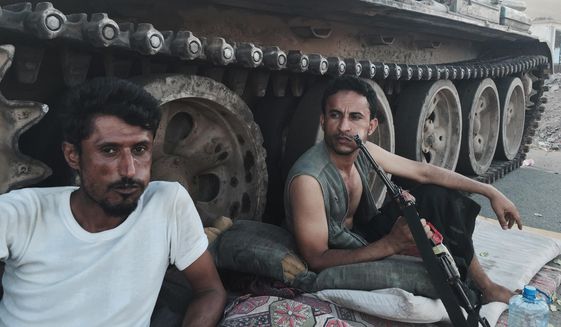
Once hailed by President Barack Obama as a model for fighting extremism, the U.S. counterterrorism strategy in Yemen has all but collapsed as the country descends into chaos, according to U.S. and Yemeni officials.
Operations against militants have been scaled back dramatically amid the fall of the American-backed government and the evacuation of U.S. personnel. What had been consistent pressure on Yemen’s dangerous al-Qaida affiliate has been relieved, the officials say, and a safe haven exists for the development of an offshoot of the Islamic State group.
It’s a swift and striking transformation for an anti-terror campaign Obama heralded just six months ago as the template for efforts to fight the Islamic State in Iraq and Syria. The shift has left Obama open to criticism that he failed to anticipate the risks of a light footprint strategy that aims to put fragile governments and beleaguered local security forces, not the U.S. military, at the forefront.
Barbara Bodine, a former U.S. ambassador to Yemen, said even the most optimistic regional experts did not share Obama’s view that the Yemen campaign was a model of success.
“It was being defined in terms of what we were doing to develop local forces and use drones and counter the immediate and real security threat,” said Bodine, now director of the Institute for the Study of Diplomacy at Georgetown University. “But what we hadn’t done, certainly had not done visibly enough, was get at the economic and governance issues that were driving the problem.”
Since September, Houthi rebels linked to Iran have ousted President Abed-Rabbo Mansour Hadi and dissolved the parliament. Al-Qaida in the Arabian Peninsula, which has been affiliated with some of the most serious attempted attacks on the U.S. since 9/11, has sought to exploit the chaos. Last month, the U.S. shuttered its embassy in the capital of Sanaa, then withdrew the rest of its military personnel from Yemen over the weekend.
The strategy has been guided by the central tenets of Obama’s philosophy for fighting extremists overseas: targeting extremists from the air, bolstering the capacity of foreign governments and avoiding putting large numbers of U.S. military personnel on the ground in dangerous countries.
“It is the model that we’re going to have to work with, because the alternative would be massive U.S. deployments in perpetuity, which would create its own blowback and cause probably more problems than it would potentially solve,” Obama said in January as the situation in Yemen deteriorated.
Now, virtually all of the Yemeni troops that had worked with the U.S. are engaged on one side or another of a three-pronged political struggle between the remnants of the Hadi government, supporters of former President Ali Abdullah Saleh, and the Houthi faction, U.S. officials say. The officials insisted on anonymity because they were not authorized to speak by name about sensitive intelligence assessments.
CIA drone strikes will continue, the officials said, but there will be fewer of them. The agency’s ability to collect intelligence on the ground in Yemen, while not completely gone, is much diminished. There have been just four U.S. drone strikes reported in Yemen this year, according to Long War Journal, a web site that tracks the attacks. That is about half the pace that last year resulted in 23 strikes over 12 months.
What’s less clear is whether AQAP will be able to take advantage of the situation to renew its active plotting against Western aviation. The group has successfully put three bombs on American-bound jets, none of which exploded. In 2012, the CIA, along with British and Saudi intelligence services, used a double agent to obtain a new design by AQAP’s master bomb maker of a device made to slip past airport security.
On Capitol Hill, there was bipartisan concern about the intelligence gap that could be created by the tumult in Yemen and the withdrawal of American personnel.
“Good intelligence stops plots against the homeland,” said Rep. Michael McCaul, the Texas Republican who chairs the Homeland Security Committee. “Without that intelligence, we cannot effectively stop it.”
Rep. Adam Schiff, D-Calif., said the drawdown of the American presence “does diminish our visibility into what’s going on there and given the concerns about what we have about AQAP and their bomb-making prowess, that’s a concern.”
White House spokesman Josh Earnest said Monday that the U.S. was still coordinating with elements of Hadi’s embattled government, which has been pushed to the port city of Aden in Yemen’s far southern end.
“The United States continues to have assets and resources in the region that will allow us to take steps where necessary to continue to apply significant pressure to extremist targets and to keep the American people safe,” Earnest said. “But it is true that that coordination would be more effective if there were U.S. personnel in the country.”
(Source: Washington Post)































